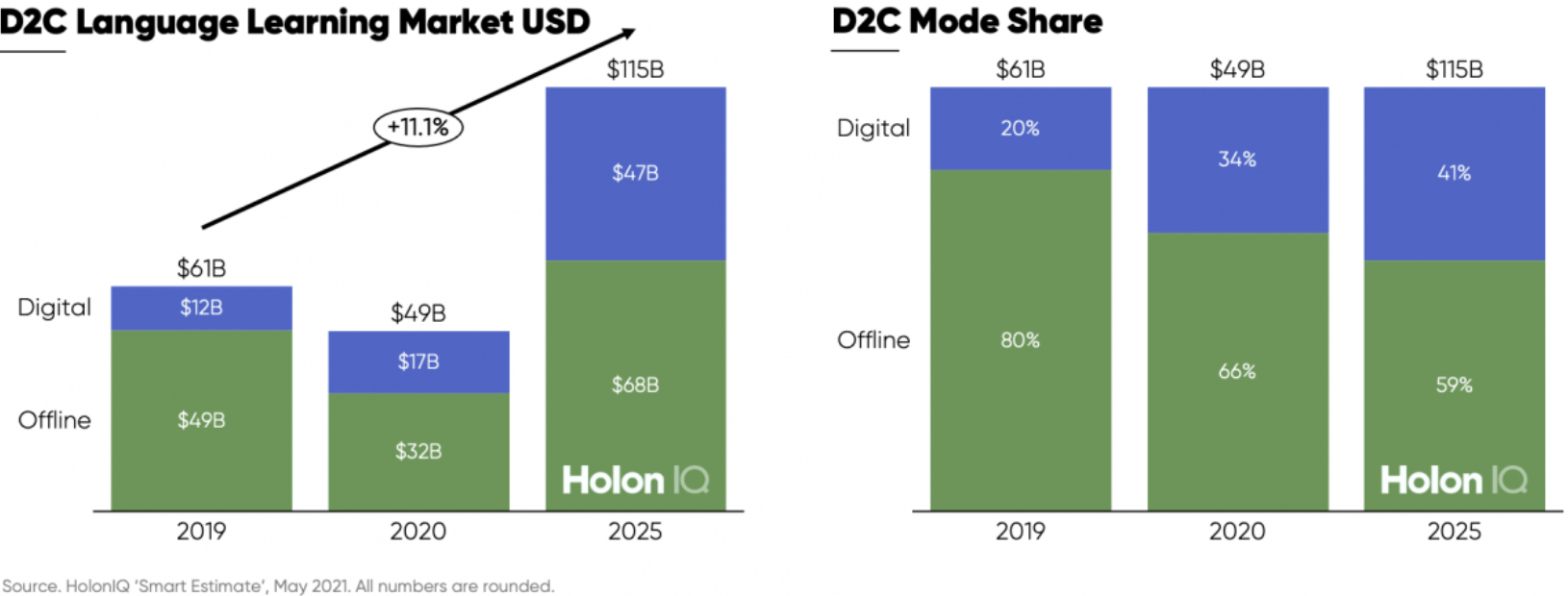Jumpspeak to the left.
Jumpspeak to the right.
Jumpspeak on down the road…
The interest in language learning solutions is growing at a dizzying pace. It’s why we are excited to jump in with both feet for the journey that Sean and Tony at Jumpspeak are navigating – to utilize AI to improve the quality of digital language learning and the opportunities afforded to individuals who master another language.
The accelerating interest in language learning is being driven by a variety of factors, including the widely held perspective that speaking English can increase financial opportunities, the increasing mobility of travelers across the globe, and the deep personal experiences that become available to humans as we learn another language. The result is a healthy market of language learners that are looking beyond the abundance of vocabulary-memorization apps to language learning experiences that truly push them towards a level of fluency that most current solutions cannot deliver.
Knowledge of languages is the doorway to wisdom.
– Roger Bacon
Research from HolonIQ shows that more than 1.8 billion people across the globe are actively learning a foreign language. The total language learning market is estimated to have reached $61B in 2019, with the fastest growth coming from the online segment representing $12 billion in 2019, and growing to $47B by 2025.

While it’s clear that the market is growing, what is less well known is the number of language learners that reach fluency, and the available yardsticks do not look great. One analysis looking at language learning in the classroom showed a 99.5% failure rate to reach fluency. And there is good reason to think that this high failure rate in the classroom carries over to the online language learning solutions in the market today.
When looking at research from NTL and their Learning Pyramid, a significant cause of these poor learning outcomes derives from the lower retention levels that passive learning models in the classroom deliver. These suboptimal classroom approaches to language learning, as well as in the online approaches of today’s market leaders in the online learning space, appear to be highly inefficient when it comes to retention and advancing learners towards language proficiency. And at the end of the day, learners’ success in mastering a language is the key measure of how much value these solutions create.
This gap is where Jumpspeak has set its sights, using AI to create a more effective approach that helps learners accelerate their language learning journey, reducing the time-to-value and achieving a higher level of success. By delivering a personalized, immersive and active approach to language learning through speaking, Jumpspeak is able to accelerate the learning process. This personalized approach works to support the language learner throughout their journey, help students overcome the pitfalls that passive learning solutions deliver, and helps avoid stranding learners who need a more tailored solution to meet their needs. Whereas a large percentage of language learners tap out at the 15% mark towards fluency, Jumpspeak excels at helping learners progress further down the proficiency curve.
The early results look promising. We’ve seen some of the amazing things that Sean and Tony have built, and can’t wait for what’s next. So…
Jumpspeak to the left.
Jumpspeak to the right.
Jumpspeak on down the road…
Sources: